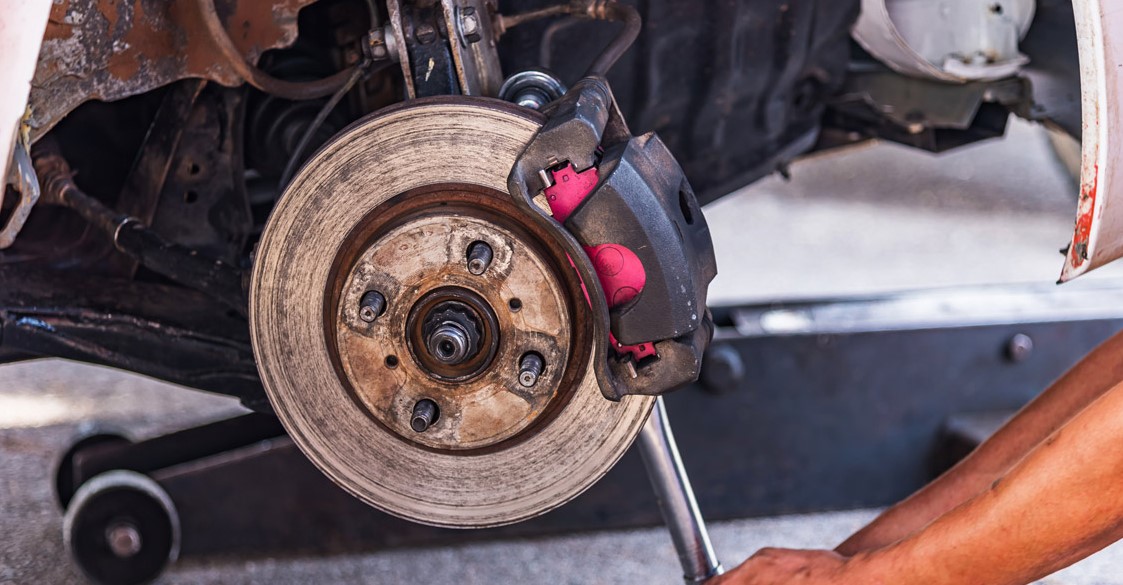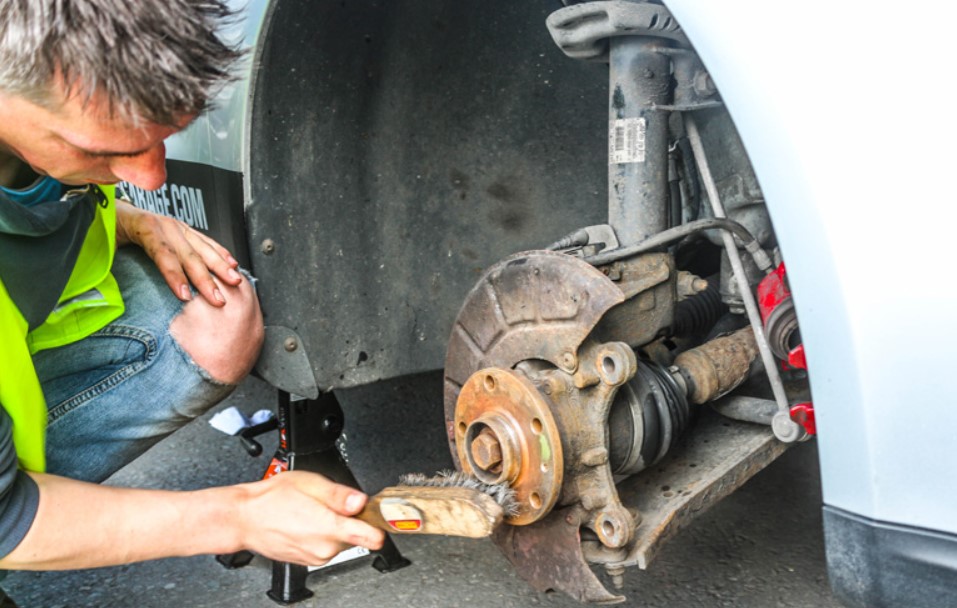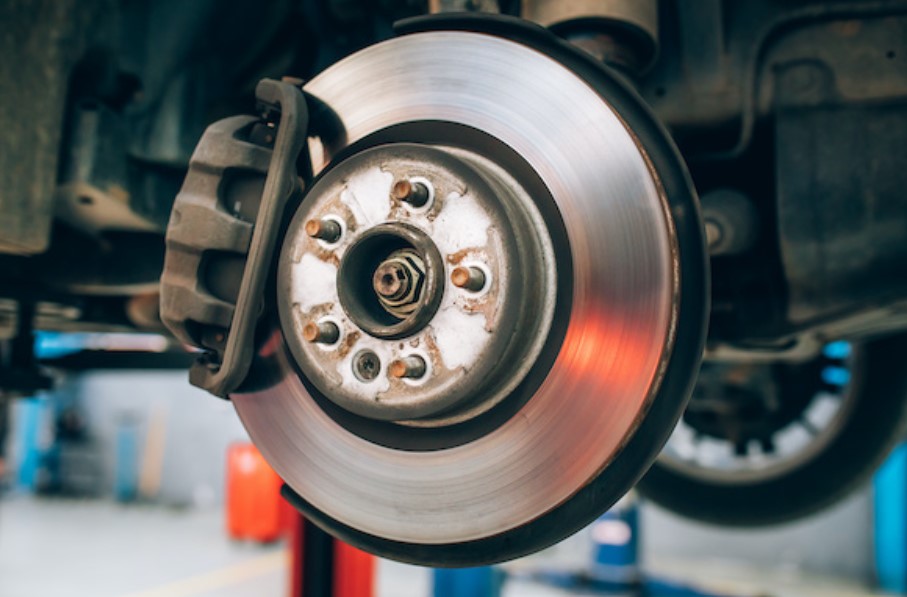Why Would A Car Accelerate When Braking?

Acceleration is like a blade with two sides; it may either serve its master or act independently. Seeing your vehicle speed up when your feet are planted firmly on the brake pedal is one of the most terrifying things you will ever encounter.
Why would a vehicle speed up when the driver applies the brakes? Most of the trouble may be traced back to a defective throttle body. If the throttle body sticks, the automobile will continue to speed up even when you use the brakes. It is also possible for the accelerator pedal to get caught on the floor mats, which might lead to unintended acceleration.
Unexpected and sudden acceleration is a dangerous issue that may lead to accidents if it occurs in a vehicle. It is critical to have a solid understanding of the factors that might lead to unintended acceleration and the necessary steps to take if your car begins to speed up without your permission.
Why Does a Car Speed Up When the Driver Presses the Brake?
One of the most typical reasons for unexpected acceleration that was not anticipated is when there is a problem with the vehicle’s power train. Many of today’s automobiles are equipped with a throttle control system that, in theory, should make them safer.
Most of the car’s electrical components are managed by the system regulating the throttle. Because of a problem with the system that controls the throttle, the vehicle may speed up when the brakes are used.
When there is a Sudden and Unintentional Acceleration
It does not matter how old the automobile is or its condition; an unexpected and sudden acceleration might happen at any moment. The car can speed up while in motion because of advancements in the construction of the electronics found in contemporary vehicles.
It’s possible to experience unintended acceleration if you:
- Make a gear change.
- Take the car off cruise control.
- Put your foot on the brakes.
These common driving behaviors have the potential to alter the electrical current in a vehicle, which might result in a malfunction. This malfunction could cause the car to accelerate unexpectedly, among other issues.
What to Do During Unintended Acceleration
Maintaining command of a vehicle in the face of unplanned acceleration demands composure and prior experience. Take a few of precautions to avoid getting into any accidents during abrupt or unexpected acceleration.
Use the Brakes
Put as much pressure as possible on the brakes if your vehicle accelerates uncontrollably. Just maintain a firm and even pressure on the brake pedal rather than hammering it as you would normally.
You may need to put more pressure than usual on the brake pedals. Even if the driver may not slow down right away, they will ultimately bring the vehicle to a halt when they have slowed it down.
Neutral Shift
This is the most critical action that must be taken during a crisis. Shifting into neutral will cause the vehicle’s speed to decrease.
Turn off the Engine
Stop the car’s engines as soon as you have put the transmission into neutral and have the impression that you have the vehicle under control. To switch off the engine in your car, press the starting button and keep it down for a few seconds if it is a push-button starter.
Maintain your composure and try to control the vehicle when it is decelerating. Take the car off the road before it comes to a full stop, and then dial 911 for assistance.
What You Should Know About Unintended Braking
Technology may simplify tasks, reduce the time and effort necessary to complete a job, and provide many other benefits. If it does what it’s supposed to do, that is.
In the same breath, technology has the potential to wreak enormous disaster if it fails to function as its designers intended. Much like many other modern creations, automobiles comprise many parts, the most notable of which are various electronics.
Most of the time, automobiles function flawlessly and encounter no issues. On the other hand, the technical components of these vehicles might malfunction, causing the car to behave unpredictably and increasing the risk of accidents that result in significant injuries and property damage.
Same Old
In the most recent couple of decades, it has been more usual to hear about recalls for motor vehicles. Despite stringent consumer protection and liability rules, many contemporary vehicles are nevertheless manufactured with flaws.
The well-being of the individuals operating the vehicles is of the utmost importance. People are worried about faults in some automobiles that allow the cars to speed up when the driver applies the brakes. This is the primary basis for this worry.
Blame it on the Pedals.
The phenomenon known as sudden unexpected acceleration (SUA) has become a significant issue with several different automobile types. The improper usage of the pedals is often the root of the problem.
There are two pedals on many different versions of automatic cars; one is used for accelerating, while the other is used for stopping. Some motorists want to come to a halt but inadvertently step on the accelerator pedal instead of the brake when they try to stop their vehicles.
The more pedals on an automobile, the greater the possibility that the driver may get confused. However, even with fewer pedals, there is always the chance of an electrical fault, which might cause the automobile to accelerate while the brakes are being used. This could happen even if the car has been modified to have fewer pedals.

Main Causes
Vehicles with automated transmissions are more likely to accelerate unexpectedly when the driver applies the brakes. Only a tiny percentage of SUA incidents involve vehicles that have manual transmissions.
Three primary factors contribute to acceleration that was not intended:
- Using the pedals incorrectly
- An issue with the electricity
- malfunction of the machinery
Driver Error
The negligence of the driver causes the majority of SUAs. Some automobile types include pedals that make it simpler for drivers to press the incorrect one, such as the brake, when they want to push the gas pedal and vice versa.
Mechanical Malfunction
Some types of automobiles have been recalled because of floor mats that cannot be adequately attached, which increases the risk of a rear-end collision. It may be difficult for the driver to apply full pressure to the brake pedal if the floor mats are not appropriately attached and may bunch up on the gas pedal.
Electrical Malfunction
The symptoms of SUA might include electrical difficulties and malfunctions. Because of the problem, the throttle can open up even while the car is in the “P” mode, which would cause the vehicle to speed up.
A problem with the electrical system could increase the engine’s RPM. If this is the case, the car will be able to go ahead with the engine’s full power as soon as the shift lever is moved to “D.”
Shifter Linkage
Some versions of automated cars can shift from park to drive without resistance or lock. However, older vehicle models with shifter linkages that have worn out are more likely to suffer some resistance while changing gears.
If there is a problem with the shifter linkage, the vehicle may continue to speed up even when you apply pressure to the brake pedal. The brake-ignition-shift lock is a feature that is becoming more common in newer types of automobiles. This lock prevents the vehicle from being started until the shift lever is in the P or N position.
Poor Maintenance
In rare instances, SUA may result from unskilled mechanics doing maintenance based on trial and error. Vehicle models that do not have official representation in the United States are more prone to experience unexpected and sudden acceleration.
The simple fact that specific automobile models have SUA is due to the subpar mechanical work that was done on them. When incompetent technicians play with the components of a vehicle, they raise the risk that the car may encounter more technical issues, including SUA.
Vehicle Programming
The likelihood of a single-vehicle accident caused by an SUA has been significantly reduced because of the many safety measures that are standard on today’s automobiles, such as brake-ignition-shift lock systems. Additionally, the use of computer networks inside vehicles has considerably decreased the likelihood of a sudden unintended acceleration occurring due to an electrical failure.
Driver Error Statistics
The United States Department of Transportation estimates that driver error is to blame for 16,000 unexpected and rapid acceleration instances each year. However, many people involved in accidents that SUA brought on do not accept this figure.
Certain things won’t go away, regardless of how many studies, lawsuits, and discussions there have been about them. For example, research has shown that there is nothing to the phenomenon of accidental acceleration, although drivers continue to assume otherwise.
The National Highway Traffic Safety Administration (NHTSA) has not discovered any car flaws that might lead to SUA. The group goes so far as to encourage drivers to take extra precautions to ensure that they do not hit the incorrect pedal by mistake.
The National Highway Traffic Safety Administration estimates that each year in the United States, pedal mistake is responsible for 16,000 car accidents. Most collisions may be traced back to drivers wearing inappropriate footwear, including cumbersome boots, flip-flops, and high heels.
Additionally accountable for unexpected and rapid acceleration is the presence of floor mats. Because unsecured floor mats might cause the accelerator to get stuck, some types of automobiles have been recalled. To avoid committing SUA, you should get used to the positions of the gas and brake pedals. In addition, be focused while driving and do your best to avoid distractions.
